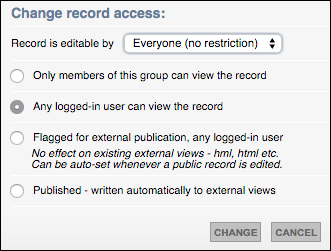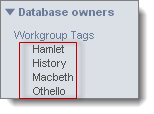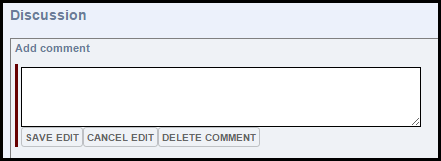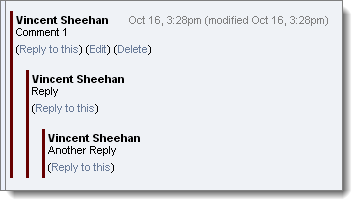Heurist is at heart a collaborative system, that clearly separates your private information from information about records of mutual interest you share with your colleagues.
As a collaborative database, researchers can share an overlapping set of records in a single database, and can communicate with one another around those records through a range of shareable communication channels. (Researchers can also 'bookmark' records to maintain their own personal, private set of information about any record.)
Heurist can be used for group projects, with tasks divided between those designing the database ('Designers') and those populating it and/or searching it ('Users'). Or it can be used by individual researchers who wish to create and use a database for their own project and who take on both tasks.
Database owners can:
You can share information with other users through:
Records are (in most cases) shared between all users. But any given user will only be interested in a small subset of records, and will want to record personal information about each record. You can do so through Bookmarks, which allow you to attach personal (private) information (i.e. your own tags, ratings and notes) about any records (including other user records) that interest you. Bookmarks also allows you to collaborate with other users by sharing information about records of mutual interest. (See Bookmark Records.)
You can also share information with other users through Exporting Data. You can export your data in a range of formats (HML, KML, RSS, Atom etc.). (See Export Data.)
Workgroups are defined by administrators. A workgroup administrator can add members to the workgroup(s) of which they are an administrator but cannot create a new workgroup. Records can be restricted to ownership by a workgroup, and may be visible only to members of that workgroup or editable only by the workgroup members but visible to all. Ownership of records and limitation of editing or viewing rights can be applied at the Workgroup level, that is, limiting the ability to change or even see records to the members of that Workgroup. This is discouraged for resources of a generic nature, since it inhibits correction and enhancement of data.
Access to a record is determined by:
You can set the ownership and visibility of a record individually. The default is all database users are owners (can edit) and any logged in user can view.
Records can only be owned by a single workgroup. Once a record is marked as owned by a workgroup, only members of that workgroup can change its ownership and visibility. A user can change ownership for an individual record to selected users if:
Ownership and view permissions should only be restricted for records which are private to a workgroup.
Ownership of a record (who can edit the record) and visibility of a record (who can view the record) is set initially when the record is created (via the Add New Record Screen):

You can edit this access from the Edit Record page:

This displays the Record Access dialog:

Tip. To change record ownership/visibility for multiple records, search and select one or more records from the Search Results pane and select Share | Set Workgroup, and complete the Change Record Access dialog.
Settings are:
Any records you want others to see can be made Viewable. They will not be editable by anyone who is not part of the owner group. You can set the default for new records to Hidden or Viewable.
To hide information from other users, set ownership of all records to yourself, or to the database owners group, and set visibility outside group to Hidden.
Note. The Discussion section of a visible record is not governed by record ownership, since individual users own their own comments. So anyone can add comments. However, if the record is hidden non-members of the workgroup will not have access to the discussion section. The Rich Text section of a visible record is not governed by record ownership, since individual users can add text blocks which they own. However, if the record is hidden non-members of the workgroup will not have access to the text section.
These are tags that are available to all members but maintained by the Workgroup Administrator (see Add Workgroup Tags).
The Workgroup Tags page allows you to select tags that are available to your workgroup members. Selected tags appear in the Keywords area of a record and are only visible to the members of the workgroup. This allows workgroup members to refer easily and quickly to records using termonology that is familiar and meaningful to the group (e.g. as a group of researchers working collaboratively).
To add/remove workgroup tags for a record
Note. For personal databases you will probably not be using workgroups, and there will be no workgroup tags listed under Available.

Tags will now appear under the relevant workgroup, letting you search records based on their tags:

The Text tab on the Edit Record page allows you to add extended notes to your record or engage in a discussion with other workgroup members.
There are two components in the text tab:
Note. The Text Editor is very similar to the Notes field on the Private Information tab except that it defaults to being visible to other users (whereas the private Notes field defaults to being visible only to the owner of the bookmark).
To enter extended text
Click on the Extended Text field:

and enter the text in the Rich Text Editor (See Rich Text Editor.):

To add a new discussion comment

Replies are nested:

You can notify workgroup members of one or multiple records you are working on immediately.
(See also Bookmark Record | Send Email Notifications.)
To send email notifications
The Share Records dialog displays:

The notification is sent immediately and includes a message and a hyperlink to the Search Results pane displaying the selected records.
If required, the recipient can then act upon the records as they wish: bookmark them, add them to their collection etc.
Created with the Personal Edition of HelpNDoc: Easily create CHM Help documents